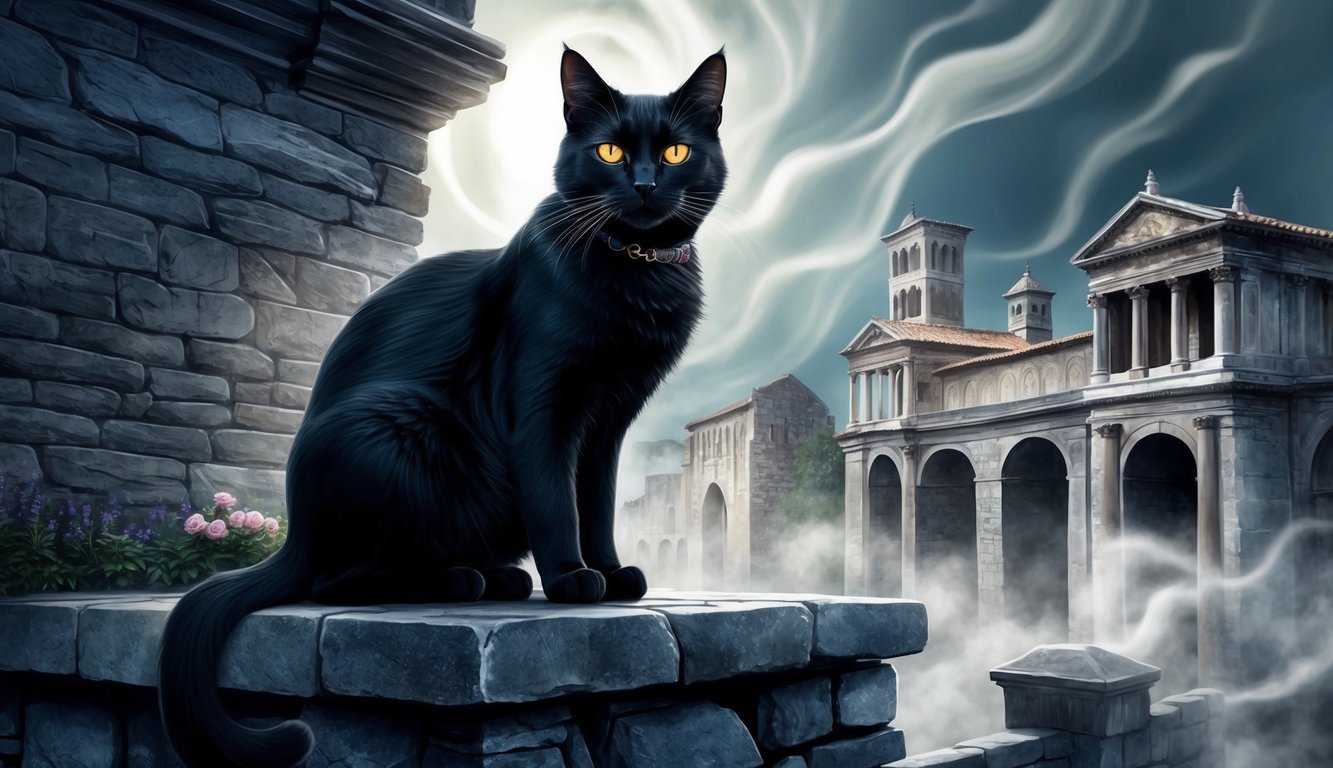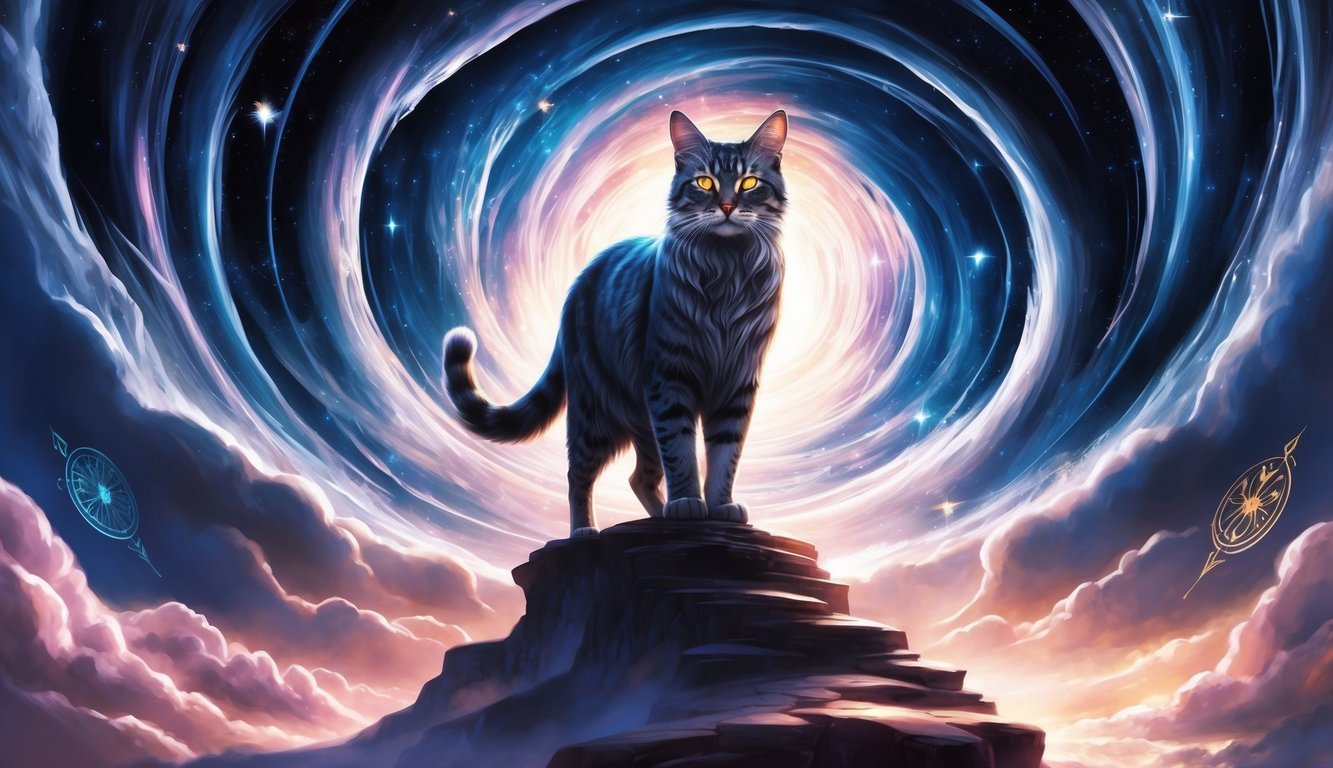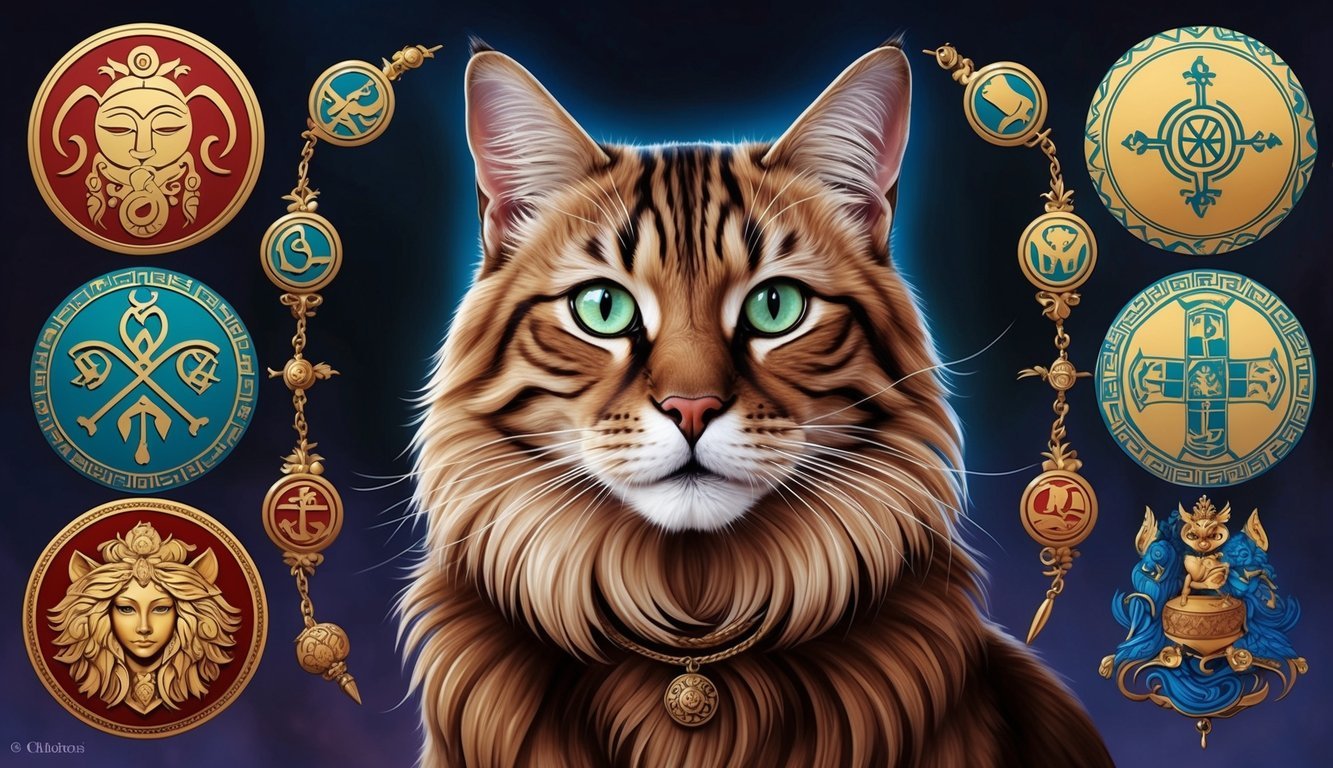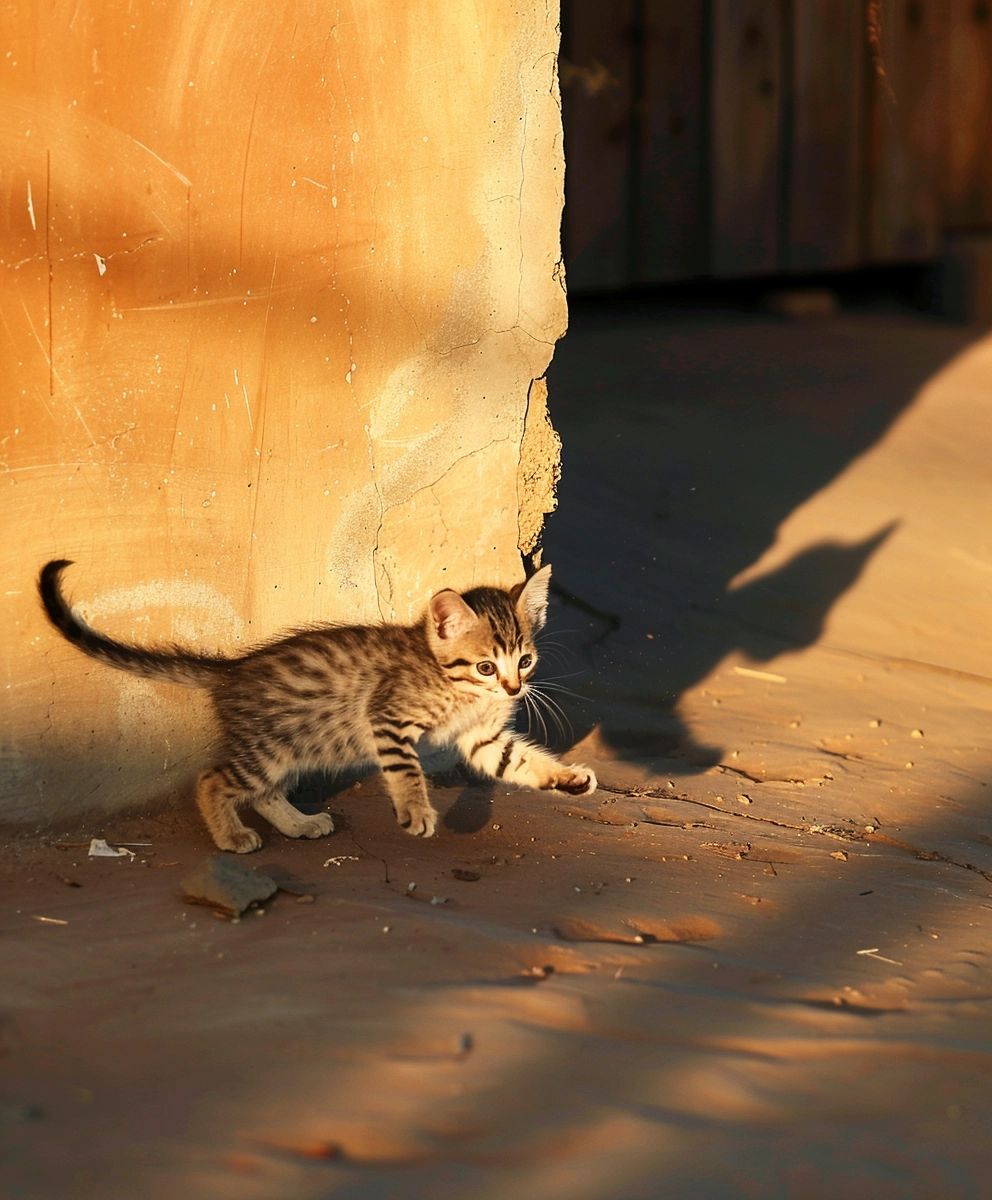Cats have long captured human imagination, woven into the fabric of folklore and superstition across the globe.
Many cultures revere these mysterious creatures, attributing them with magical properties and unique traits.
From the ancient Egyptians, who viewed cats as sacred beings, to the Japanese, where the beckoning cat is a symbol of good fortune, there’s a wealth of captivating tales to explore.
As you dive into the world of feline legends, you’ll encounter various cat myths that reveal how different societies interpret their behaviors.
For instance, some believe that a cat’s whiskers can predict the weather, while others think that seeing a black cat brings good luck or misfortune, depending on where you are.
These myths not only reflect the relationship between humans and cats but also highlight the whimsical nature of storytelling.
Get ready to embark on a journey through time and across cultures, uncovering the fascinating myths and legends surrounding our feline friends.
Whether you’re a cat owner or just someone who appreciates their enigmatic charm, you’ll find intriguing insights that might just change how you view these beloved companions.
Mythical Origins of Cats in Ancient Civilizations
Cats have always held a special place in human history, especially in ancient cultures.
Their mysterious nature and grace led to their association with various deities and myths.
This section explores the captivating roles that cats played in ancient Egyptian mythology.
Bastet: The Egyptian Cat Goddess
Bastet was one of the most revered deities in ancient Egypt.
Represented as a lioness or as a woman with the head of a lioness or domestic cat, she embodied home, fertility, and domesticity.
Cats were considered sacred animals dedicated to her, symbolizing protection and love.
Owning a cat was seen as a sign of good fortune.
They were believed to ward off evil spirits.
Killing a cat, even accidentally, could lead to severe penalties.
Bastet’s temples often housed numerous cats, cared for by priests and priestesses.
They were cherished members of the community, often depicted in household art and pottery, illustrating their integration into daily life.
Sekhmet and the Protective Powers of Feline Deities
Sekhmet, another lion-headed goddess, represented war and destruction.
While she was a fierce protector, her connection to cats emphasized their guardianship roles.
Sekhmet was said to unleash her wrath on enemies but was also called upon for protection against threats.
Cats served as protectors of grain stores, guarding against rodents and pests.
This role reinforced their status as valuable companions in ancient Egyptian society.
In mythology, Sekhmet and Bastet showcased the duality of feline nature—both nurturing and fierce.
Through these goddesses, cats became powerful symbols of protection and mystery throughout ancient Egypt, forever linking them to the divine.
Cats and Witchcraft: From Familiars to Omens
Cats have long held a unique place in witchcraft lore, often seen as mystical companions and symbols of both good fortune and bad omens.
Their enigmatic nature has sparked fascination, leading to various interpretations across cultures.
Black Cats: Bad Luck or Misunderstood Allies?
You might have heard that black cats bring bad luck, especially if one crosses your path.
This belief dates back to the Middle Ages when fear of witchcraft peaked.
Black cats were often seen as witches’ familiars, thought to possess magical abilities and serve as protectors.
Contrary to these negative connotations, many cultures view black cats as symbols of good fortune.
In Japan, for instance, a black cat is believed to bring prosperity.
Their appearance is often linked to favorable occurrences, challenging the idea that they are merely harbingers of doom.
The Role of Cats as Witch’s Companions in Folklore
In folklore, cats have been portrayed as loyal companions to witches, embodying independence and a strong connection to the supernatural.
These feline familiars are often depicted in literature, serving as guides in magical practices.
For example, in Shakespeare’s “Macbeth,” we encounter witches conversing with their animal companions, including a cat named Graymalkin.
This highlights how these creatures were intertwined with human witches and their spells.
Cats were thought to assist in transformation and shape-shifting, enabling witches to navigate both the physical and spiritual realms.
Their mysterious aura and behavioral traits made them perfect familiars, reinforcing the bond between witches and these enigmatic animals.
Legendary Cats in European Tales

European folklore is rich with stories about cats, weaving together elements of magic, good fortune, and mysterious creatures.
You’ll find legendary felines, each with unique traits and cultural significance that reflect the beliefs and traditions of the time.
The Beckoning Cat: Maneki-Neko and Fortune
While the maneki-neko is often associated with Japanese culture, its influence has spread to Europe as a symbol of good fortune.
This enchanting cat figurine is depicted with one paw raised in a beckoning gesture.
You might spot these cats in various shops and homes, believed to invite prosperity.
The tortoiseshell cats are often linked with this symbol, embodying traits of good luck and fortune.
Many people place maneki-neko statues in their businesses to attract customers and enhance their financial success.
The Mysterious Cat Sìth of Scottish Lore
The cat sìth, or cat sith, is a fascinating creature in Scottish folklore.
This mythical cat is said to resemble a large black feline with a white spot on its chest, resembling your average house cat but with an air of the magical.
According to legend, the cat sìth could steal the souls of the dead before they were buried if it crossed over the body.
To protect against this, the locals would leave offerings of milk out on the night of a death.
This practice highlighted the cat’s enigmatic presence in the lore and reinforced its connection to superstition and mysticism.
Matagot: The French Magical Cat
In French folklore, the matatog is a magical cat known for its dual nature.
Respected by many, this feline is considered both a guardian and a bringer of mischief.
If treated well, the matagot brings good fortune and helps to improve your circumstances.
However, neglecting or mistreating it could lead to misfortune.
It’s said that these cats can bring wealth to a household, especially if they appear as tortoiseshells.
This duality makes them a compelling figure in tales of French folklore, illustrating how relationships with these mysterious creatures can drastically impact your life.
Norse Legends: The Cosmic Role of Cats

In Norse mythology, cats hold a significant place, often intertwined with divine figures and rich with symbolism.
Two fascinating aspects highlight their cosmic role: the companionship of Freyja and the legendary Yule Cat.
Freyja’s Feline Companions: Guardians of the Goddess
Freyja, the goddess of love, beauty, and fertility, is famously associated with two large, magnificent Norwegian Forest Cats.
These felines weren’t just pets; they served as her charioteers, pulling her golden chariot across the skies.
In the world of Norse legends, these cats symbolized protection and guidance.
They were believed to possess supernatural powers, watching over Freyja and her pursuits.
The bond between Freyja and her cats illustrated how important these creatures were in Norse culture, embodying loyalty and strength.
Whenever Freyja set out on her celestial journeys, her feline companions ensured her safe passage.
Their presence was a reminder of the mysterious connection between the divine and animal realms.
The Yule Cat: A Christmas Tale from Iceland
In Icelandic folklore, the Yule Cat, or Jólakötturinn, is a legendary creature that roams the snowy landscape during the Christmas season.
This enormous feline is said to devour anyone who fails to receive new clothing before Christmas Eve.
Originating as a cautionary tale, the Yule Cat encourages people to embrace the spirit of giving and generosity.
It highlights the significance of being prepared for winter.
The custom of gifting new garments became intertwined with the legend, emphasizing community care.
The Yule Cat also reflects the Norse belief in the supernatural qualities of cats.
Viewed as both protectors and avengers, these mystical beings serve as a fascinating reminder of why felines are cherished in myths and modern traditions alike.
Asian Legends and the Cats Among Us
Cats have woven themselves into the fabric of Asian folklore, presenting captivating tales of mythical beings and cultural significance.
From the shape-shifting Bakeneko in Japan to the popular Maneki-Neko, these stories reflect deep-rooted beliefs and practices.
Japan’s Bakeneko: Shapeshifters and Protectors
Bakeneko, often depicted as a cat with supernatural abilities, can transform into a person.
These shape-shifters possess the power to speak and even curse their owners if mistreated.
Their dual nature makes them both intriguing and feared.
In many legends, Bakeneko serve as protectors.
Folk stories highlight their role in safeguarding homes and bringing good fortune.
This complexity adds to their appeal, blending elements of the mysterious and the benevolent.
Culturally, Bakeneko embody the respect and superstition that many Japanese have towards cats.
They remind you that every cat may hold secrets and strength beyond the ordinary.
The Prosperous Paws of Maneki-Neko
The Maneki-Neko, or beckoning cat, is a delightful symbol of prosperity and good luck in Asian cultures.
You often see it in homes and businesses, its raised paw inviting fortune and positive energy.
Traditionally, this cat appears in various colors, each representing different blessings.
For instance, a black Maneki-Neko wards off evil spirits, while a gold one brings wealth.
The cultural significance of Maneki-Neko extends beyond mere charm.
Its presence signifies hope and the aspiration for success in both personal and professional realms.
When you see it, remember that it embodies a rich tradition steeped in belief and positivity, making it a cherished figure across Asia.
Cats in Mythology: Symbols of Duality and Mystery
Cats have long captivated human imagination, embodying both gentleness and fierce independence.
Their mythical associations often explore themes of duality, where they represent both protector and trickster.
Let’s uncover the intriguing roles cats play in mythology.
The Enduring Enigma of Feline Agility and Nine Lives
You’ve likely heard that cats have nine lives.
This popular superstition hints at their remarkable agility and resilience.
In various cultures, this belief reflects the dual nature of cats—they are both vulnerable and nearly invincible.
The notion of “nine lives” suggests not only survival but also a mystical connection to fate and fortune.
For example, in ancient Egypt, the goddess Bastet was symbolized by a cat, blending domesticity with fierce protection.
The agility of cats allowed them to embody the enchanting spectrum of life, death, and rebirth.
Independence and Intuition: The Essence of Cat Lore
Cats symbolize independence and intuition, traits celebrated in many ancient folktales.
These creatures often appeared as solitary figures, navigating the world on their own terms.
Their mysterious behavior has led to associations with magic and the unknown.
In several mythologies, cats are seen as guides between realms.
Their curious nature invites you to explore the unseen, whether in ancient legends or your own life.
This independence has fostered a deep respect across cultures, from the reverence of cats in Egypt to the mystical significance in Japanese folklore.
Their enigmatic presence reminds you of the delicate balance between familiarity and mystery.
Contemporary Myths and the Ongoing Legacy

Cats continue to inspire fascinating myths and superstitions that shape our modern understanding of these beloved animals.
Some of these ideas are rooted in historic beliefs, while others evolve from contemporary culture.
Here’s a closer look at the myths circulating today and how they connect to a larger narrative.
Modern-Day Superstitions: Are They Based in Truth?
One of the most prevalent modern superstitions involves black cats.
In many cultures, encountering a black cat is seen as a bad omen, stemming from medieval associations with witchcraft.
Conversely, some cultures consider black cats to be symbols of good luck.
Another myth persists about cat falls; it is often said that cats always land on their feet thanks to their incredible agility.
While they can indeed twist in mid-air, it doesn’t guarantee they won’t be injured, particularly from great heights.
Such myths create ongoing intrigue about feline behavior.
The Resilience of Cat Legends in Today’s Culture
Cats continue to hold a significant place in folklore.
In Russian folklore, tales tell of magical cats that protect families from harm, showcasing the protective nature attributed to these creatures.
Similarly, in Irish folklore, cats are believed to have a connection with the fairy realm.
People often think of them as guides to the otherworld.
These stories demonstrate how myths adapt and persist, enriching your cultural understanding of cats.
The lasting legacy of cat mythology highlights the unique bond between humans and felines.
This echoes through generations and into modern conversations about these enigmatic companions.

